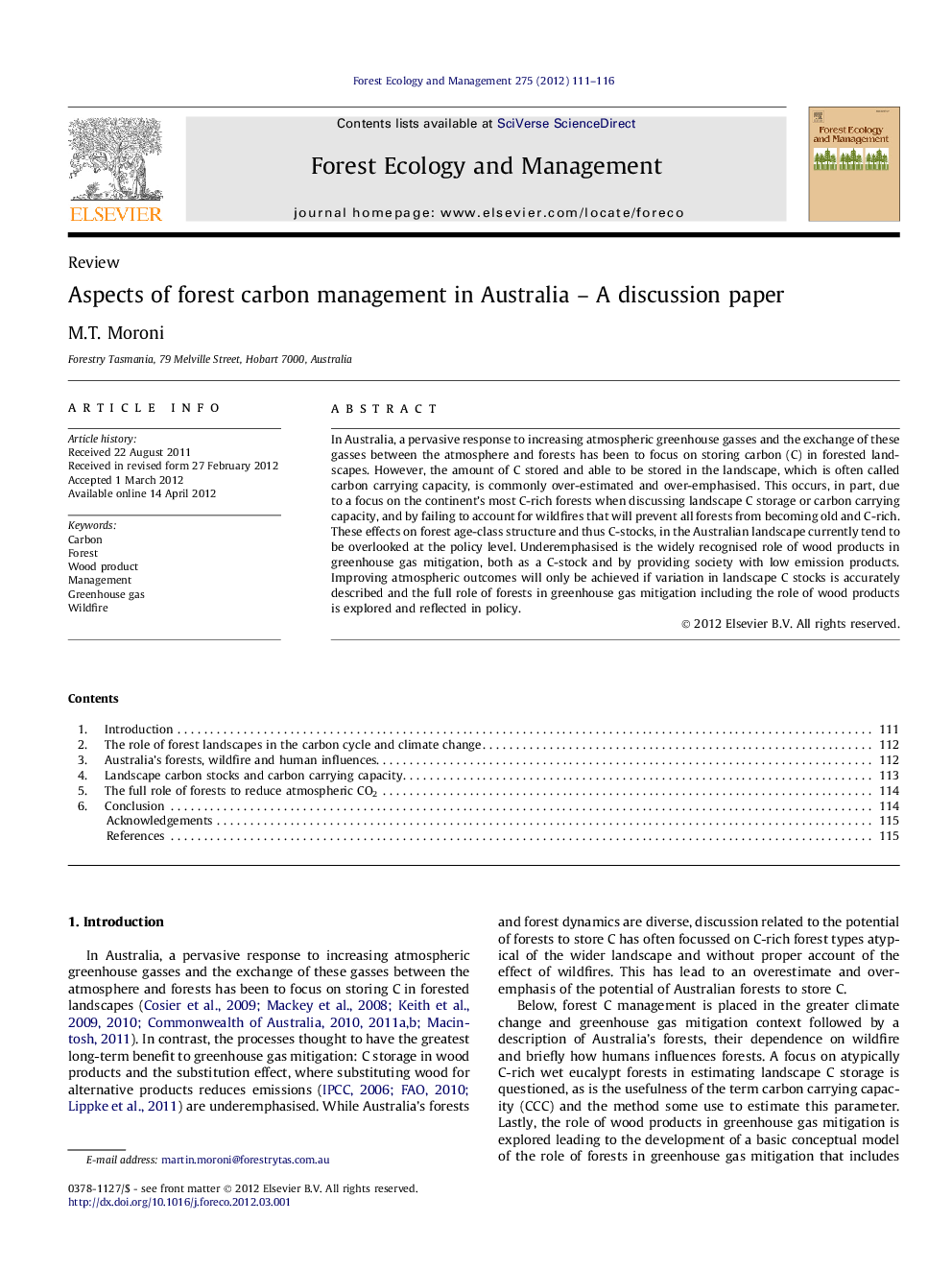| Article ID | Journal | Published Year | Pages | File Type |
|---|---|---|---|---|
| 87317 | Forest Ecology and Management | 2012 | 6 Pages |
In Australia, a pervasive response to increasing atmospheric greenhouse gasses and the exchange of these gasses between the atmosphere and forests has been to focus on storing carbon (C) in forested landscapes. However, the amount of C stored and able to be stored in the landscape, which is often called carbon carrying capacity, is commonly over-estimated and over-emphasised. This occurs, in part, due to a focus on the continent’s most C-rich forests when discussing landscape C storage or carbon carrying capacity, and by failing to account for wildfires that will prevent all forests from becoming old and C-rich. These effects on forest age-class structure and thus C-stocks, in the Australian landscape currently tend to be overlooked at the policy level. Underemphasised is the widely recognised role of wood products in greenhouse gas mitigation, both as a C-stock and by providing society with low emission products. Improving atmospheric outcomes will only be achieved if variation in landscape C stocks is accurately described and the full role of forests in greenhouse gas mitigation including the role of wood products is explored and reflected in policy.
► Greenhouse gas mitigation in Australia focuses on landscape C storage. ► The role of wood products in greenhouse gas mitigation is underemphasised. ► Some estimates of the potential for Australian forests to store C are excessive. ► Australia’s forest C-stocks are in the range reported by the IPCC for temperate forests. ► Wildfire must be properly accounted for in estimating landscape C storage potential.
